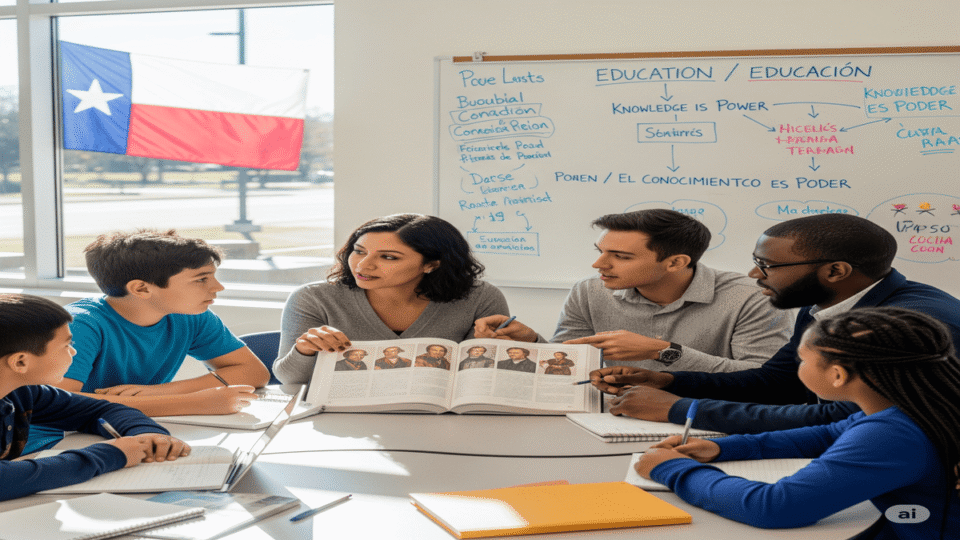Bilingual education in Texas has a deep and complex history, rooted in cultural preservation, language rights, and educational equality. Among its milestones, the “Ten Who Dared“ stands as a symbol of courage and advocacy for bilingual learning in a state with one of the largest Spanish-speaking populations in the United States.
The story of the Ten Who Dared revolves around leaders—educators, lawmakers, and community activists—who pushed for the development and protection of bilingual education programs in Texas during times of political resistance and social change.
The Background of Bilingual Education in Texas
Texas has long been a multicultural state, influenced heavily by Hispanic and Latino heritage. Yet, before bilingual programs became common, non-English speakers—especially Spanish-speaking students—were often marginalized in classrooms. Many children were forced to abandon their native language to fit into an English-only education system.
This created educational gaps, high dropout rates, and cultural disconnection for many students. Bilingual education emerged as a solution, aiming to help students maintain their heritage language while mastering English.
Who Were the Ten Who Dared?
The term “Ten Who Dared” refers to a group of advocates who played key roles in challenging the status quo and ensuring that bilingual education became a recognized and protected part of Texas schools. These individuals came from diverse backgrounds—teachers, policy makers, and community leaders—but shared one vision: educational equity for all students.
The Legislative Push
The bilingual education movement in Texas gained momentum in the late 1960s and 1970s, especially after the passage of the Bilingual Education Act of 1968 at the federal level. Texas lawmakers who were part of the Ten Who Dared fought to create state-level policies that ensured bilingual programs would receive funding, resources, and legal support.
Challenges They Faced
- Political Resistance – Many critics believed that bilingual education slowed English learning.
- Funding Issues – Securing state and federal funds was a constant battle.
- Cultural Bias – Advocates had to fight stereotypes and prejudice against non-English speakers.
- Legal Barriers – State laws had to be amended to recognize bilingual instruction.
Achievements of the Ten Who Dared
- Securing State Support – Their work helped pass Texas laws that mandated bilingual programs in certain school districts.
- Teacher Training Initiatives – They promoted specialized training for bilingual educators.
- Curriculum Development – They supported the creation of bilingual textbooks and teaching materials.
- Cultural Recognition – Their advocacy encouraged schools to value students’ heritage languages instead of suppressing them.
The Impact on Texas Classrooms
Today, Texas has one of the most robust bilingual education systems in the nation, serving hundreds of thousands of students each year. While challenges remain—such as teacher shortages and debates over program models—the foundation laid by the Ten Who Dared continues to shape policies and classroom practices.
Modern Bilingual Education in Texas
Bilingual education programs now include:
- Dual Language Immersion – Students learn in two languages equally.
- Transitional Bilingual Programs – Students gradually shift from native language instruction to English.
- Heritage Language Programs – Designed to preserve and develop students’ first language skills.
Lessons from the Ten Who Dared
Their legacy teaches us that educational reform often requires persistence, unity, and a willingness to face opposition. They demonstrated that embracing cultural and linguistic diversity benefits not only minority students but the entire educational system.
How Educators Can Continue Their Work
- Advocate for bilingual programs in schools and communities.
- Encourage cultural understanding among students.
- Support professional development for bilingual teachers.
- Push for fair policies and adequate funding.
The Future of Bilingual Education in Texas
With Texas’s growing multicultural population, bilingual education is expected to expand further. Technology, new teaching strategies, and evolving policies will shape how the next generation of students experiences learning in multiple languages. The Ten Who Dared paved the way, but the movement is ongoing.
FAQs on Ten Who Dared: Texas Bilingual Education
1. What does “Ten Who Dared” mean in Texas education history?
It refers to a group of advocates who fought for the establishment and protection of bilingual education programs in Texas during times of political and social resistance.
2. Why was bilingual education controversial in Texas?
Some critics believed it delayed English acquisition, while others saw it as unnecessary. However, research shows bilingual education can improve academic performance and language skills.
3. What was the main goal of the Ten Who Dared?
Their goal was to ensure that students who spoke languages other than English could receive quality education in both their native language and English.
4. Did the Ten Who Dared succeed in their mission?
Yes, their efforts led to state-level support, legislation, and program development for bilingual education, though the fight for resources and equality continues.
5. How does Texas bilingual education look today?
It includes dual language, transitional bilingual, and heritage language programs, serving a large number of students from diverse backgrounds.

